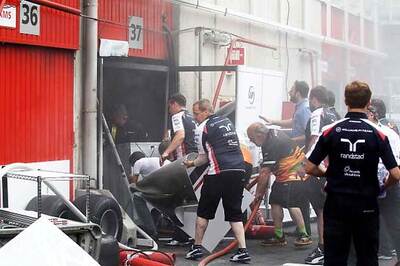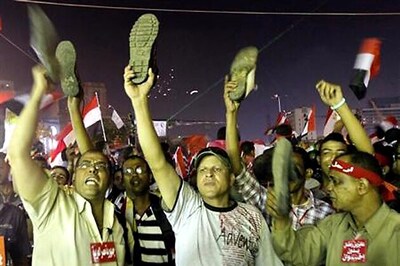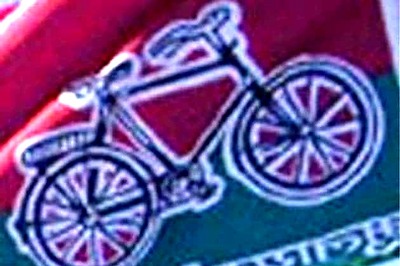
views
New Delhi: The Narendra Modi government has formed a panel of seven experts to locate the grave of Mughal prince Dara Shikoh, believed to be inside Humayun’s Tomb in Delhi. The committee is likely to meet for the first time on February 26 in the capital to discuss ways to locate the site.
The experts said they would first try to find “literary evidence” and “inscriptions on the grave”.
But that task is mired in difficulties, and some of the members believe it is like “walking in the dark” as none of the 140 graves in the 120 chambers of Humayun’s Tomb are identified or have inscriptions.
The panel is headed by TJ Alone, director-monuments, at the Archaeological Survey of India (ASI). The other members are RS Bisht, Sayeed Jamal Hassan, KN Dikshit, BR Mani, KK Muhammed, Satish Chandra, and BM Pandey – all senior archaeologists.
No Inscriptions
“We know from hearsay that there is one grave on the western side on the top of the platform at Humayun’s Tomb identified as Dara Shikoh’s,” Mani said. “But it doesn’t have any inscription saying this. Unless we find some written record, we don’t know if it’s his grave. Or we have to find the inscription on the grave saying it belongs to him. If nothing works, we have to accept the traditional wisdom.”
The panel members said that there are a number of graves of people who were royals. “It is difficult to pinpoint any one, so our first effort would be to find any inscription or literary evidence,” said Mani.
Dara was decapitated and so were the sons of Bahadur Shah Zafar, all of whom are believed to be buried in Humayun’s Tomb, said one of the members of the panel, adding that “it is like walking in the dark” to find a headless Dara’s grave among 140 others.
KN Dikshit, from the Indian Archaeological Society, said, “The first meeting will be on how to identify it. That is a difficult task because there are so many graves in the tomb. He was executed by his brother Aurangzeb so his body will be without a head. Now the question is, if there are no names on the graves, how should we identify it because in the present scheme of things we cannot open up all the graves? How many can we disturb?”
However, News18.com has learnt that Muhammed won’t be able to attend the first meeting.
Bisht said the task has to be explored objectively. “There are no inscriptions, and prince and princesses from the Mughal families are buried there. There is a dearth of records as well. Dara was beheaded but so were the two sons of Bahadur Shah Zafar.”
He suggested that the search can also rely on scientific techniques.
BJP’s Interest in Dara
Observers say Aurangzeb has been a lightning rod for leaders from the Bharatiya Janata Party (BJP) and its affiliated organisations. In 2017, Prime Minister Narendra Modi mocked the Congress by hailing Rahul Gandhi’s then-imminent election to his party’s top post as the institution of “Aurangzeb Raj”. In January last year, Rajasthan BJP vice-president Gyan Dev Ahuja compared Rahul, who was Congress chief at the time, with Aurangzeb, suggesting that the Congress “sultanate” was coming to an end.
At a conference in September, Rashtriya Swayamsevak Sangh (RSS) leader Krishna Gopal held up Dara Shikoh as an example of a “good Muslim” and “face of inclusiveness”, juxtaposing him with Aurangzeb.
Aligarh Muslim University last year decided to establish a research chair in the name of Dara Shikoh.
The eldest son and heir-apparent of Mughal emperor Shah Jahan lost in the war of succession that ensued after his father fell ill in 1657. Dara was defeated by his younger brother Aurangzeb after a fierce battle and was executed in 1659 on the new emperor’s orders.
Syed Ali Nadeem Rezavi, chairman and coordinator of the AMU history department, told News18.com: “Dara is seen as a good Muslim by the BJP, and opposite to what Aurangzeb stood for. But, till a few years ago, leaders of the saffron party were anti-Dara because they did not like the idea of someone drawing parallels between Hinduism and Islam.”
Dara was on good terms with the seventh Sikh Guru, Guru Har Rai. In Varanasi, he learnt Sanskrit and used that knowledge to translate the Upanishads into Persian and taking them to the Western world. He made efforts towards finding a common mystical language to bridge the gap between Islam and Hinduism.
Dara’s translation Sirr-e-Akbar (The Greatest Mystery) stated that the work referred to in the Qur'an as the Kitab al-maknun, or the hidden book, is an allusion to the Upanishads.
“There are difficulties in finding Dara’s grave – no source mentions the exact place of burial and the only known reference is Humayun’s Tomb, which was the cemetery of the Mughals,” Rezavi said. He added that historian Jadunath Sarkar also suggested that the burial place is Humayun’s Tomb. “However, work done by historians doesn’t cite a source to confirm this.”




















Comments
0 comment